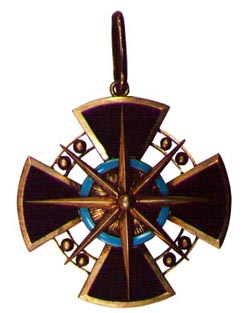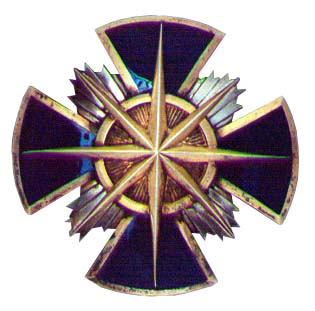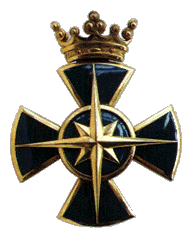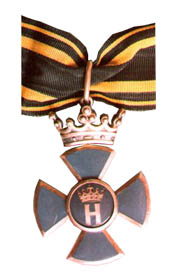
|
 |
| The
order of the Star of Brabant was instituted on 14th
of June 1914 in 12 classes ( plus 4 special classes
for women ) and was awarded as an order for welfare,
and social matters. Grand duke Ernst Ludwig made
himself and his successors to the grand masters of
this order. The name of the order was given because
of his ancestor the first Duke of Hessian, Heinrich,
from the family line of Brabant.
Because the order wasn't designed
for war matters and the fact that the 1st World War
was over in 1918, the order wasn't awarded to many
people. Due to this the order belongs to the most
rare of the whole variety of German pre 1918 orders.
The average number of awarding per class is between
10-15. |
 |
|
 |
The bearer of the
order were allowed to add the orders insignia in
their coat of arms. Except for the grand cross, the
grand commanders cross with turquoise and the grand
commander cross 1st class, the order could be
awarded with crown for outstanding merit.
Grand duke Ernst Ludwig of Hessian-Darmstadt was
involved in the artists' colony, "Mathildenhöhe" in
Darmstadt, Germany with its "Werkbundstil". This is
mirrored in the orders design. Thinking of the time
the order was instituted it is an avant-garde unique
styled piece. |

The order was awarded in the
following classes:
- Grand cross
- Grand commanders cross with
turquoise
- Grand commanders cross 1st
class
- Grand commanders cross 2nd
class
- Commanders cross 1st class
- commanders cross 2nd class
- Honor cross 1st class
- Honor cross 2nd class
- Knights cross 1st class
- Knights cross 2nd class
The lady's decorations:
- Honor cross lady
- Lady's cross 1st class
- Lady's cross 2nd class
- Lady's of the silver cross
The order also had an
affiliated medal |
 |
© A. Schulze Ising, II/99
|
| |





